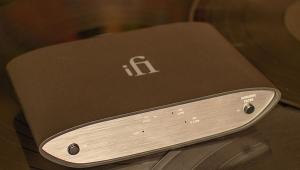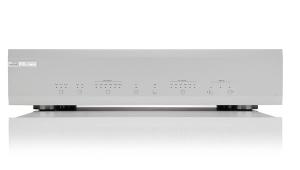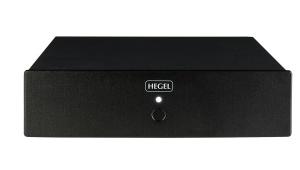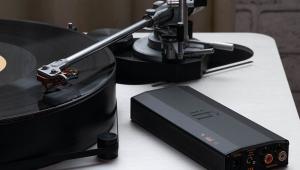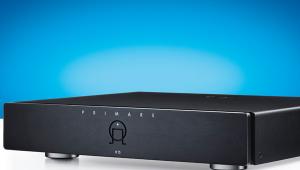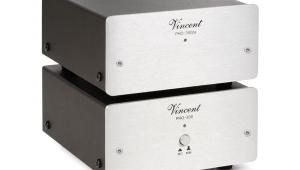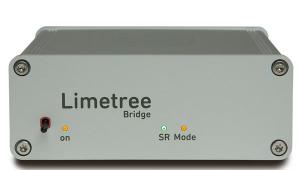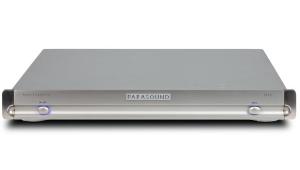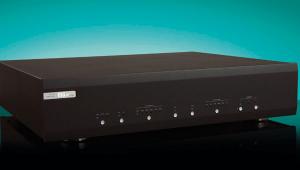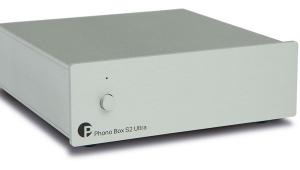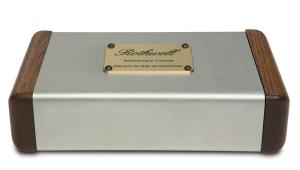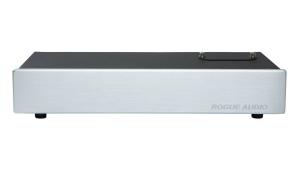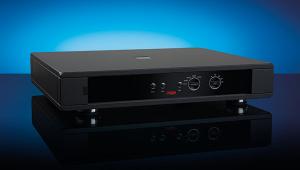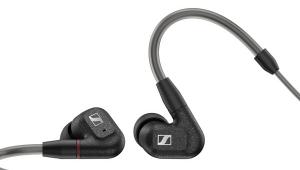Chord Electronics Huei
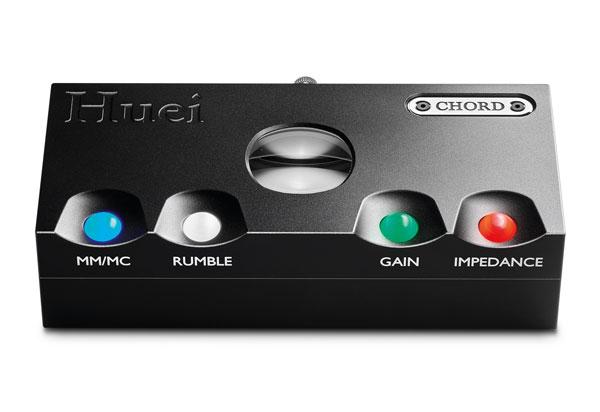
 As a rule, external phono stages this side of the high-end divide aren’t especially interesting to look at. For most, being ‘sexy’ quite simply isn’t part of the job description, or even a distant ambition. Which is fair enough. Sensibly priced supporting players aren’t usually cut out to be scene stealers and, for many users, being heard and not seen is perfectly acceptable.
As a rule, external phono stages this side of the high-end divide aren’t especially interesting to look at. For most, being ‘sexy’ quite simply isn’t part of the job description, or even a distant ambition. Which is fair enough. Sensibly priced supporting players aren’t usually cut out to be scene stealers and, for many users, being heard and not seen is perfectly acceptable.
Of course, it doesn’t have to be this way. Anyone that’s familiar with Chord Electronics’ amplifiers, CD transports and especially its DACs will know that doing things differently is firmly locked into the company’s DNA and that the design language of its new phono stage is merely the latest example of convention being flipped into the waste disposal.
As well as looking a lot like the company’s Qutest DAC, and once again using those distinctive illuminated coloured orbs for control and communication, the phono stage is called Huei – not to remind us of Huey, Dewey and Louie, the triplet nephews of Donald Duck, but the pretty hues of those polychromatic spheres. The Kent-based operation has previous form when it comes to giving its products quirky, off-the-wall monikers – consider Mojo, Hugo and DAVE – but I reckon Huei is far and away the cutest of the lot. In other words, cuter even than the Qutest.
If you’re thinking it a little odd that Chord Electronics, a name synonymous with bleeding-edge digital tech, is concerning itself with old-school analogue, it’s true that it probably isn’t the first brand that comes to mind if you’re looking to spend around a grand on an MM/MC phono stage. The company would like that to change and reminds us that its founder (now chairman) John Franks started his business by building analogue amplifiers. And besides, like many of today’s Chord customers, Franks has a huge vinyl collection which, incidentally, was much plundered by Chord’s new MD Matt Bartlett to assist with finessing aspects of Franks’ original design. Until now, the £2,900 Symphonic has been Chord’s sole phono stage, and for moving-coil cartridges only. Part of the Choral range, it’s very much a flagship product and a tad pricey if your turntable is a Rega Planar 3 or similar.
Huei fixes that. It’s the second member of the more affordable Qutest family and shares the seminal DAC’s compact aluminium billet casework, though there are rather more glowing balls set into the anodised alloy top (or front if you lay it on its side). Either way, a solid aluminium brick with microprocessor control functions is a major departure from the more usual plain plastic box and fiddly DIP switch arrays traditionally employed for cartridge impedance and gain matching.
Behind Chord’s glass porthole, Huei takes its balanced architecture and much of its electronic design from the more costly Symphonic MC phono stage and realises it with a super-short signal path. Buffered from input to output with an internal switch-mode power supply, a combination of discrete transistors and op-amps constitutes most of the circuitry.
With both feet firmly in the ‘broadly configurable’ rather than the ‘uber purist’ camp of phono stage design, Huei can be finely adjusted to work with a wide variety of cartridges – moving magnet as well as moving coil. With some phono stages, the inevitable complexity is all too obvious and not a little daunting, but the Huei’s microprocessor-controlled interface and system of coloured lights at least makes the journey more pleasurable. The fixed 47kohm impedance setting for moving-magnet cartridges is joined by 12 user selectable settings for moving coil impedance matching – 100ohm to 3.7kohm. These are joined by eight additional user selectable settings for gain: 21dB to 42dB for MM and 49dB to 70dB for MC. There’s also a subsonic filter somewhat erroneously labelled ‘Rumble’ – unless you happen to be using an old, worn turntable thus afflicted – giving a -24dB-per-octave cut below 50Hz, via a Rausch Slope profile. It’s useful for quelling the bass cone antics caused by warped records. The claimed maximum output is 20V RMS (peak-to-peak), which is plenty.
Just like the Qutest – which it so closely resembles – the Huei’s striking casework is machined from aviation-grade aluminium billet and weighs a modest 657g. The standard of build, finish and detailing are straight ahead high-end, and that goes for the quality of the connections round the back as well. Nothing too fancy here, just the usual single-ended stereo RCA connections for input and output plus a balanced XLR out option.
Getting things up and running with a Rega Planar 6 fitted with Ania MC cartridge (HFC 453) is actually quite straightforward, but not without referring to the user manual first. Setting the impedance is simply a matter of matching the 100ohm cartridge specification with the corresponding colour on the impedance orb (red). Keep pressing it and it cycles through the impedance colour options. Likewise gain, but once hooked up to your amp (in my case, a Hegel H120), this can easily be done by ear.
Sound quality
Sonically, phono stages tend to fall into one of two groups. In the first, its contribution is obvious and can be used to enliven, soften, sweeten, sharpen or modify the characteristics of the preceding turntable/arm/cartridge. In the other – usually but not always in a more expensive category – the idea is to accomplish the RIAA equalisation and gain step up as cleanly and transparently as possible, letting the deck and its ancillaries set the sonic agenda.
With a remastered, 180g edition of Kate Bush’s The Kick Inside on the Rega’s platter, I’m inclined to think there’s a third group where a high degree of transparency is benignly finessed to heighten the general sense of refinement, precision and control and this is where the Huei sits. Clearly very low in noise, it’s the Chord’s skill in communicating the Rega’s absence of an obvious sonic fingerprint yet at the same time making it sound subtly more poised and open than when played through Rega’s own Fono MC phono stage (HFC 426) – a snug hand-in-glove sonic fit with the Ania cartridge – that’s both impressive and moreish. The way Bush’s plaintive vocal on The Man With The Child In His Eyes projects out of a swirling cloud of massed strings is beautiful, the supporting piano arpeggios crisp and sonorous. I’m simply lost in the music, unconcerned about the means of its delivery – a Planar 6 trait that’s further enhanced by the Huei.
Cueing up the loosely acoustic musings of former Smog frontman Bill Callahan from his glorious Shepherd In A Sheepskin Vest album, I try the Huei with a Pro-Ject X1 and NAD C 588 (both reviewed in HFC 453), the former fitted with a custom spec version of the NAD’s Ortofon 2M Red moving-magnet cartridge and, again, both decks’ soundstages become airier and more expansive with attendant gains in refinement and resolution, unlocking hitherto unnoticed layers of tonal texture in Callahan’s rich baritone.
Conclusion
The Huei’s appeal extends all the way from its rock-solid build and playfully colourful, sphere-based control and communication system to its impressive knack of extracting the best from a turntable/cartridge combo without being too painfully honest about the ropier aspects of a less-than-pristine recording. DV
DETAILS
Product: Chord Electronics Huei
Price: From £990
Origin: UK
Type: MM/MC phono stage
Weight: 657g
Dimensions: (WxHxD) 160 x 41 x 72mm
FEATURES
● Selectable MM/MC input
● Adjustable settings for impedance and gain
● Rumble filter
● RCA and XLR outputs
 |
Inside this month's issue:
Q Acoustics 3020c standmount loudspeakers, Perlisten R10s active subwoofer, Quad 33 and 303 pre/power amps, Acoustic Solid Vintage Full Exclusive turntable, newcomer Fell Audio Fell Amp and Fell Disc and lots, lots more...
|


